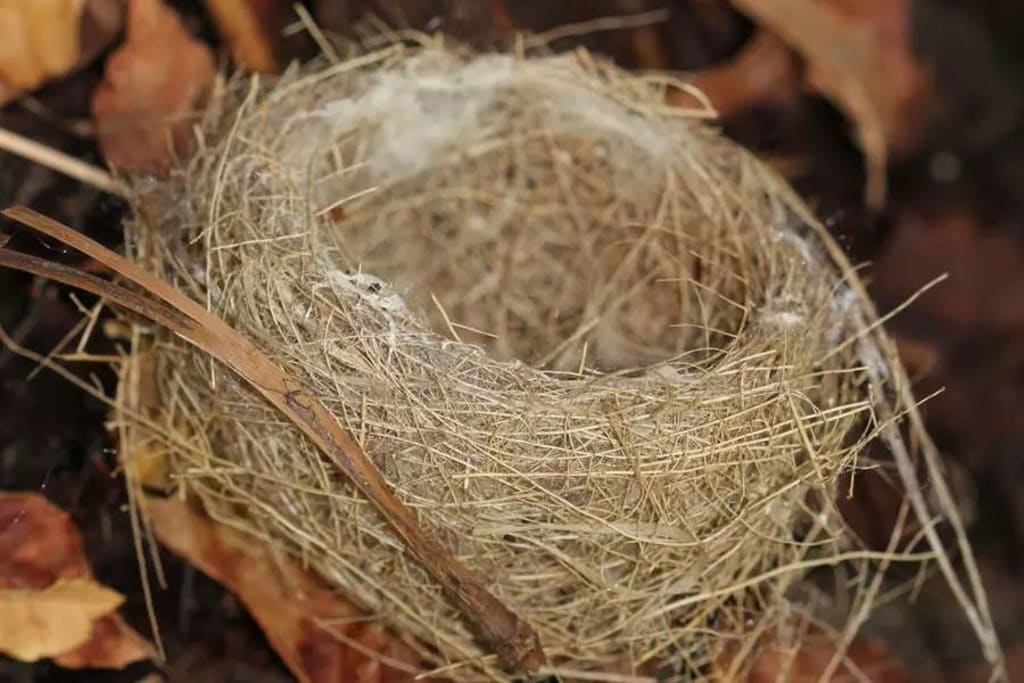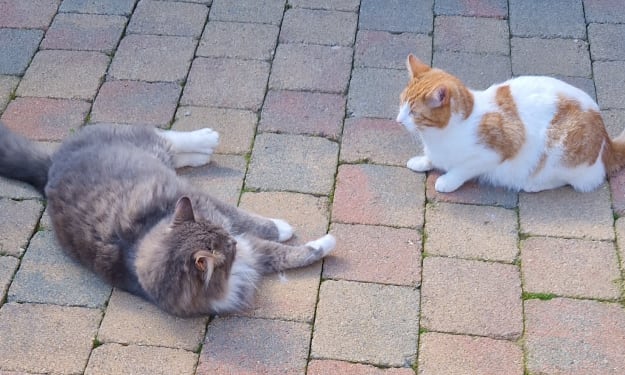
Birds build nests to lay their eggs in, to protect their young from predators and to keep themselves warm in winter. There are many different types of bird nests which are categorised by their type or style. This is based on where they are built, the characteristics of the nest and the materials that have been used to build the nests. Nests come in many different styles ranging from nests built on the ground or in trees to mud chambers or woven nests.
Species of Birds and their Nests
The species of bird determines the type of nest they build. Some species, such as vultures, penguins, nighthawks and gulls make ground nests called “scrape” nests. These are simply dips in the soil or vegetation that the birds cover with stones or leaves. Scrape nests are usually very shallow, just a dip in the ground deep enough to stop the eggs rolling out. Some birds use their feet to make the hollows whilst others just roll around in soft soil.
Other species of birds, such as the Bank swallow, make “burrow” nests to lay their eggs in. They burrow into the ground, either horizontally or vertically depending on the species of bird and make chambers at the end. These are a very efficient type of nest and afford a suitable climate for the young birds.
Similar to burrow nests are “cavity” nests made by species such as waterfowl, owls and woodpeckers that make cavities in trees to nest in.
Larger nests which are bigger than the mother bird and the eggs together are called “Platform” nests and are usually made in trees, on the ground or in shallow water.
A very common nest type is the “cupped” nest build by hummingbirds and Passerines. They are made from a larger number of different materials and can be seen in many different locations such as tree tops.
Nests for Protection
As well as making their nests predator-proof, some breeds of bird will use special material to protect their young from other forms of harm. There are some plant materials that have antimicrobial properties that the birds can use to inhibit the growth of bacteria that could harm the eggs and hatchlings.
Construction
Different species of birds use different materials when making a nest. Many species use whatever they can find, such as twigs, leaves and scrap paper. Others use harder substances such as stones. Whilst other species make intricately designed nests to lay their eggs in such as the mud constructions made by swallows that hang from tree branches and the chambers woven by Weaver finches that they hang in bushes and on thin branches.
Old Nest Refurbishment
Most species of bird make a new nest every year and when the young have flown the nest they just abandon the nest to fall apart. Other species, such as swallows and flycatchers, will go back to the same nest year after year and refurbish it to use again unless there are dogs, mice or cats nearby or the nest has become overrun with parasites in which case they will find a new nesting site.
Categories of Nest
- Mound: Mounds are built by birds using their feet. They collect up leaves, grass and soil and pile it up over the eggs. As the material decomposes it keeps the eggs warm with the heat it generates.
- Scrape: A Scrape is a hollow that the bird has scratched into the soil or vegetation. They are usually shallow, only deep enough to stop the eggs rolling out. Some species line them with feathers, grass or shells whilst others leave them empty. Alternatively, birds will simply roll about in soft soil or vegetation to create the hollow. Oystercatchers are an example of the type of bird which makes this type of nest.
- Adherent: Nests that are made from mud and stick to walls, cliffs and stone ledges are called Adherents. They can be a variety of shapes, including hemisphere, cone or globe. The birds build the nest from mud and dirt they collect; they let it dry before adding another layer. Some birds add saliva to stick the materials together. Barn swallows build this type of nest.
- Burrows: Some species of bird will burrow into the ground vertically or horizontally into a vertical cliff face using their feet and beaks. They create a chamber at the end of the burrow. Burrows vary in size depending on the species of bird that has made it.
- Pendant: Nest woven from plants such as grasses and suspended from tree branches are called Pendant. These nests resemble hanging bags and can be cup nests or an enclosed bag with an entrance hole. Orioles make this sort of nest.
- Cup: The most common type of nest is the cup nest. They are made from grass, lichen, spider webs and mud. The birds usually make them in the fork of a tree but can be in other places. The birds collect up the materials they want to use, fly to the nesting site and apply it to the nest. They make a depression in the middle to keep the eggs in. The material used is stuck together with mud and spider webs.
- Aquatic: Waterfowl often build their nests in water. They either float the nest on the surface of the water or build foundations using rocks, vegetation and sticks to water level. These nests can also be anchored in shallow water.
- Platform: Platform nests are usually much bigger than the birds that make them. They are usually built in shallow water or at the top of trees. Hawks commonly build this sort of nest.
- Cavity: Birds make holes in trees to lay their eggs in. They make an opening with their strong beaks or chew the soft wood to make the cavity. Most birds aren’t able to make these cavities themselves and will often use holes made by other birds or natural cavities. Man-made bird houses fit into this category.
References
About the Creator
Clare Scanlan
I am passionate about writing! Passionate about animals, especially horses, passionate about women's and children's rights!





Comments
There are no comments for this story
Be the first to respond and start the conversation.